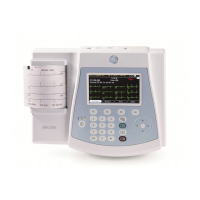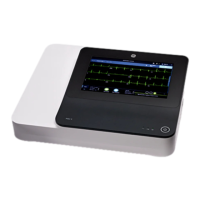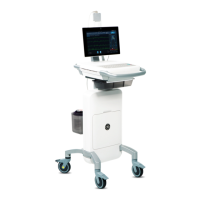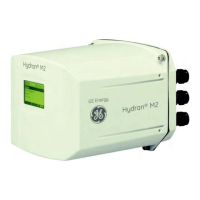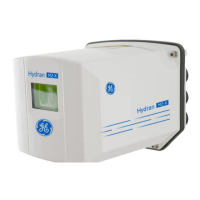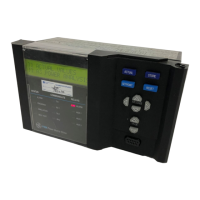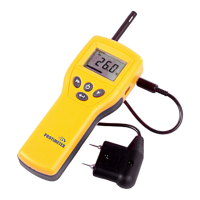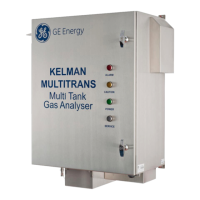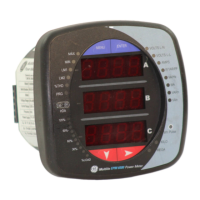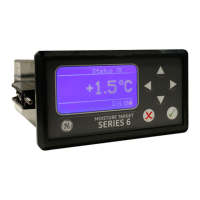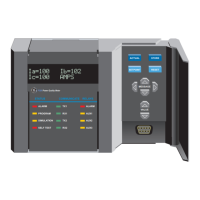
Do you have a question about the GE MFE DMS 2 and is the answer not in the manual?
| Brand | GE |
|---|---|
| Model | MFE DMS 2 |
| Category | Measuring Instruments |
| Language | English |
Identifies the manufacturer and product line of the operating manual.
Outlines essential elements for proper ultrasonic test equipment use.
Emphasizes the need for adequate training for ultrasonic test equipment operators.
Discusses the limitations of ultrasonic testing and the need for caution.
Lists essential procedures to minimize errors in ultrasonic thickness measurements.
Explains the importance of calibrating sound velocity for accurate thickness measurement.
Details the mandatory probe zeroing procedure for accurate thickness readings.
Explains how temperature variations affect calibration and the need for on-site calibration.
Specifies requirements for selecting a suitable and well-conditioned transducer for testing.
Highlights the importance of familiarity and consistency in using ultrasonic couplants.
Describes the "doubling" effect where readings may appear twice the actual thickness.
Explains how to use the manual to set up and operate the DMS 2/DMS 2E Ultrasonic Thickness Gauges.
Provides a quick-start procedure to help users quickly use the instrument.
Explains the ultrasonic principle used by the DMS 2 to measure material wall thickness.
Lists the key features and capabilities of the DMS 2 instrument.
Provides an overview of the manual's content and structure for new users.
Helps users identify the instrument's mode by recognizing different display configurations.
Explains the menu system structure and how to access instrument features and settings.
Details the unique features of the six most common display configurations encountered.
Provides a brief description of the function of each key on the instrument's keypad.
Guides users through the process of installing batteries in the DMS 2 instrument.
Explains how to configure the DMS 2's display and operating features for the first time.
Details procedures to adjust display visibility, contrast, and update rate for optimal viewing.
Covers system-wide parameter adjustments including language, date, and time formats.
Explains operational parameter adjustments like display orientation, battery type, and power saving.
Determines how thickness measurements are taken, including mode, probe, and calibration.
Guides adjustment of basic TG setup options, including probe type and measurement mode.
Adjusts instrument's minimum and maximum thickness alarm values and their indications.
Explains the different probe zeroing procedures available: AUTO, MANUAL, and USER.
Details the two basic calibration procedures: 1-PT and 2-PT.
Describes how to lock instrument settings to prevent accidental changes after initial setup.
Explains how numerical and graphical thickness measurement data can be stored and managed.
Details the flexibility and capabilities of the DMS 2's on-board data recorder.
Guides creating a Master Comment List for attaching notes to data points.
Explains how to create new data files, including copying parameters from existing files.
Explains how to activate the Test Mode, interpret the display, and work with the Test Menu.
Details the steps to activate the Test Mode and prepare for measurement.
Guides on how to freeze the A-scan display for closer evaluation and adjustment.
Explains how to use the Minimum-Capture Mode for locating the thinnest measurement in a series.
Explains how to measure and record thickness, and store measurements in data files.
Provides instructions on how to select and open an existing data file from the Data Recorder Menu.
Details how to activate Test Mode and store thickness measurements in the active data file.
Guides on how to close an active data file from the Data Recorder Menu.
Describes features that improve data collection flexibility, like attaching comments and Micro-Grids.
Explains how to attach comments from a Master Comment List to specific data points.
Details how to create and use Micro-Grids for detailed measurements within a single file location.
Explains how to enlarge or reduce file size using EDIT Submenu functions.
Configures how the digital thickness display indicates an uncoupled probe (HOLD or BLANK).
Describes various ways the A-scan display can be modified for better visibility and signal adjustment.
Lists options for modifying A-scan appearance like contrast, grid, and image shape.
Explains how adjusting GAIN changes the amplitude (height) of the displayed A-scan image.
Describes how to adjust the RANGE control to set the maximum material thickness displayed.
Explains how the DELAY feature adjusts the left-to-right position of echo signals in the A-scan display.
Explains the function of A-gate and B-gate in positioning for correct thickness measurement.
Explains how rectification affects the display of the A-scan signal.
Allows measurement of thickness over time and displays a graphical cross-section.
Covers saving, loading, and deleting instrument configuration parameter sets.
Introduces the instrument's Data Recorder mode for saving, organizing, and evaluating measurement data.
Guides on how to select and open an existing data file from the Data Recorder Menu.
Explains how to interpret the DR display screen when the RECORD Submenu is selected.
Guides on how to close an active data file from the Data Recorder Menu.
Provides instructions on how to delete one or all existing data files.
Explains how to navigate data files and search for specific attributes.
Guides on how to change the active data file or set to 'NO ACTIVE FILE'.
Explains how to move between data points within an active data file.
Guides on how to quickly access specific positions (Row, Column, etc.) within a data file.
Describes how to tag attributes and search for data points based on those tags.
Explains how to modify the automatic advance feature for data file navigation.
Guides on modifying the appearance of the DR display's Navigation Window.
Details how to store and re-access A-scans associated with data points.
Explains how to modify file labels and insert notations into the data file header.
Guides on editing names for file features like Elevations and Locations.
Explains how to modify numerical thickness readings directly within the DR Mode.
Describes how to set minimum and maximum thickness limits and alarm features in DR Mode.
Explains how to view statistical data for a file to identify trends.
Guides on checking the instrument's available memory for data files and scans.
Details how to configure the DMS 2 to communicate with printers and personal computers.
Guides on identifying the printer type for communication with the DMS 2.
Explains how to connect the DMS 2 to a PC using compatible software.
Describes how to send thickness, velocity, and display data directly to a printer.
Explains how to generate and output various types of reports to a printer.
Guides on selecting different report types like ACTIVE, ALL, DIR, and CMNTS.
Details the procedure for generating and sending a selected report to an attached printer.
Lists the technical specifications for the DMS 2 instrument.
Provides details on specifications for various probes compatible with the DMS 2.
Lists specifications for different dual element probes.
Lists specifications for different single element probes.
Lists recommended probes for use with the D-Multi measurement mode.
Discusses common considerations affecting measurement reliability.
Addresses how flaws can affect thickness readings and suggests examination methods.
Explains how surface conditions like grooves or roughness can impact readings and how to correct them.
Provides tips for measuring on curved surfaces and selecting appropriate probes.
Details procedures for measuring thickness on materials with high surface temperatures.
Explains methods for measuring thickness through coatings using multi-echo or TopCOAT modes.
Introduces the TopCOAT mode for measuring through coatings and non-coated metals.
Guides on connecting the TopCOAT probe and selecting its measurement mode.
Details the calibration procedure for the TopCOAT measurement mode.
Explains the probe zeroing procedure specific to the TopCOAT probe.
Guides on determining and entering coating material acoustical velocity for T-COAT mode.
Explains how to identify and enter data for the TopCOAT velocity reference block.
Introduces the Auto-V mode for measuring non-coated material without knowing sound velocity.
Guides on specifying the AUTO-V measurement mode and connecting the TopCOAT probe.
Outlines the conditional warranty terms for the Krautkramer DMS 2 test instrument.
Provides contact information for GE Inspection Technologies Service Centers.
Lists the different data file structures available for organizing measurement data.
Describes the simplest data file format with sequentially numbered measurement points.
Describes a data file format with LOCATION and POINT structure elements.
Describes a data file format for testing areas using 2D coordinates.
Describes a data file format for testing areas where each location is a grid.
Describes a data file format for inspecting boilers with ELEVATION, TUBE, and POINT elements.
Describes a data file format similar to CUSTOM LINEAR but with alphanumeric descriptors for points.
